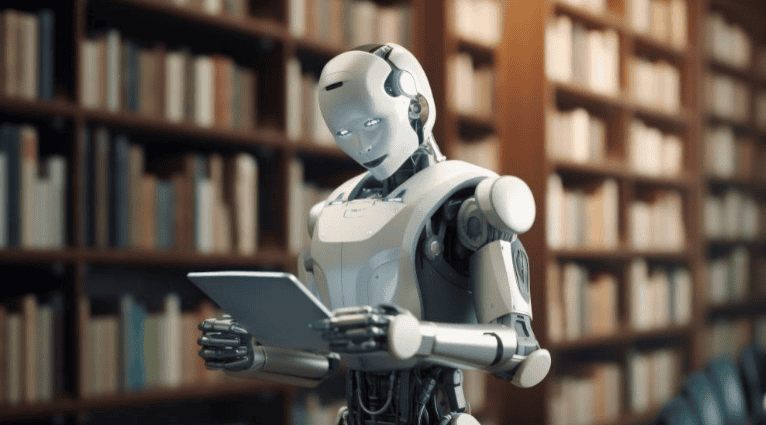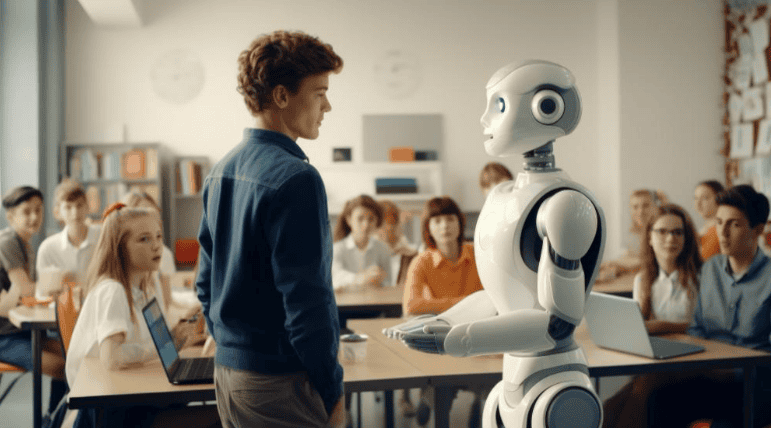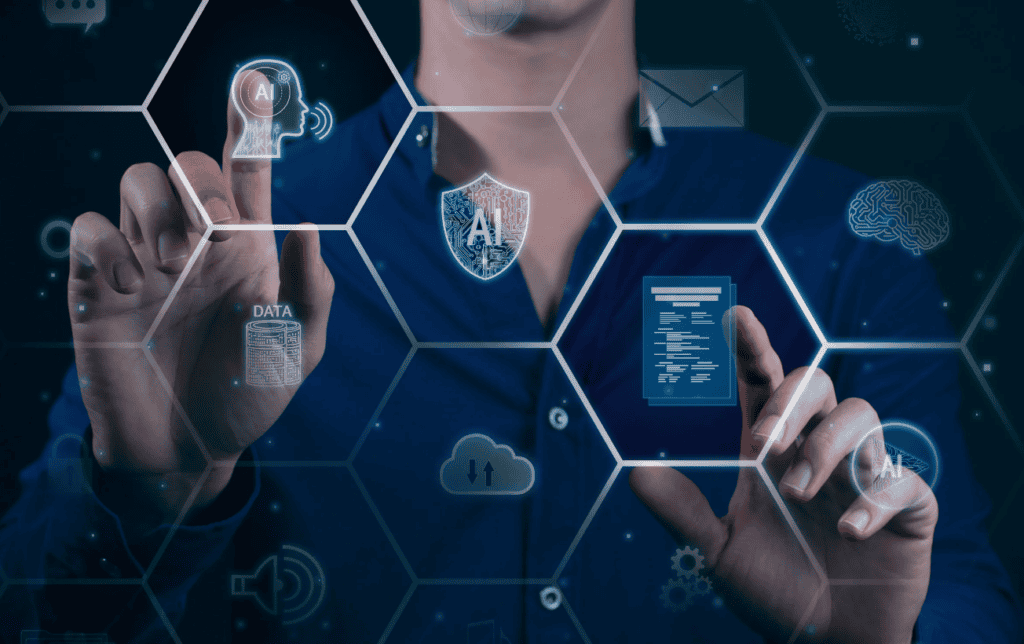Education is one of several industries being transformed by artificial intelligence (AI). Artificial intelligence is transforming education and learning. It offers the capacity to automate administrative operations and personalize learning experiences. How is AI used in education?
Table of Contents
This article will look into AI used in education – its benefits and anticipated future improvements in this critical field.

Personalized Learning Experiences
Have you ever thought about how nice it would be to learn at your own pace? This is possible because AI can learn on its own. There are ways for these systems to find out how well a student has done in the past and then tailor the lessons to that student.
The AI system can change how hard and how often history is taught to a student if they do well in math but not so well in history. This will make the history easier to understand, more fun, and more useful.
AI tools also give students feedback that is right for them. These tools can grade projects and let students know right away what they need to work on. This is very helpful because it lets them learn from their mistakes and fix them right away.

AI can also grade your work, which gives teachers more time to come up with new and interesting ways to teach. There's another cool thing about personalized learning that's called “dynamic content creation.”
AI used in education can create quizzes, engaging modules, and educational games that are tailored to each student's level of knowledge and personal preferences. Along with making sure the information is right for their level, this keeps it interesting and hard for them to learn.
Real-Word Examples of AI Used in Education:
Research Assistance:
AI is also now an important tool for academic study, especially when it comes to making the writing process better. Tools that can be used as an AI essay generator not only make it easier to write drafts, but they also improve the level of academic writing.
These AI systems can suggest ways to make things better, make outlines, and even help with data analysis. This lets students and researchers focus more on the subject of their work and less on how to write it. The use of AI in this area of education makes difficult jobs easier and speeds up the process of writing well-organized, well-argued papers.
AI Presentations Tools
AI tools for presentations include a wide range of platforms that make it easier to make and show interesting slideshows. Beautiful.AI is a well-known example. It uses machine learning algorithms to make visually appealing slide layouts automatically based on the information given, which makes the design process easier for presenters.
SlideBot is another useful tool. It uses natural language processing to turn spoken talks into visually stunning slides in real-time, which makes it easier for the speaker to connect with the audience.
AI-powered features in tools like Canva and Prezi suggest design elements, and template suggestions, and make collaborative editing easier. This gives users an unmatched level of freedom and efficiency when making powerful presentations.
AI Time-Management Tools
Time management tools that use AI have totally changed how people plan and set up their days. A well-known one is Todoist. It looks at the tasks that users have already done and gives them personalized productivity tips that help them better manage their time and tasks. We can also use the clockwise tool.
It uses AI to move meetings and tasks around automatically, giving you blocks of quiet work time that are easier to focus on and get more done. Users can also get detailed information on how they spend their time from tools like RescueTime that track what you do online.
This helps them see patterns in how much you get done and change your plans in a smart way. These time management tools with AI help users get things done faster and better by helping you make better use of your time.
Assistive Reading Tools and AI Tutors
Tools with AI, like Microsoft's Immersive Reader, help students with dyslexia and other learning differences understand what they read better. With these tools, students can do things like decode text, look up words in a dictionary, and simplify text, which helps them learn more effectively.
Students can get extra help from AI tutors and chatbots at any time of the day by asking questions and showing them how to use learning resources.
AI teaching helper “Jill Watson” at the Georgia Institute of Technology is an example. It was built on IBM's Watson platform. Human teachers can focus on more difficult student needs while Jill takes care of simple questions from students.
Automation of Administrative Tasks
AI is changing more than just teaching and learning in education. It's also changing how things are run. AI can do things automatically, like sign ups, schedules, and even talking to students.
AI-powered chatbots, for example, can answer questions from students and parents, give information about classes, and help with the enrollment process. This makes things run more smoothly and reduces the amount of work that needs to be done by humans.
AI has made it possible for more people than ever to go to school. Text-to-speech and speech-to-text converters let disabled students use tools that work best for them, which helps them learn. tongue translation AI has also made it possible for people whose first tongue is not English to take classes in other languages.
Intelligent Tutoring Systems and Analytics
Have you ever needed extra help after class yet struggled to get one-on-one assistance? Intelligent teaching systems, or ITS, are artificial intelligence-powered computer programs that function similarly to one-on-one coaching sessions.
These strategies are designed to help pupils rapidly and at their own learning speed. This is not always doable in ordinary classes due to the high student-to-teacher ratio.
AI systems can tell teachers how their kids are doing at the moment. Teachers can use this information to figure out which students are having trouble and which topics those students don't understand well.
Now that teachers know this, they can change how they teach, focus on areas where students are having trouble, and even change the way their lessons are organized to help students learn more.

The Future of AI in Education
It's great AI used in education is making new ways to teach and learn possible. We can expect learning systems that are more personalized, tools for running a business that works better, and ways of teaching that get better over time.
AI has a lot of potential to help solve bigger problems in education, like making sure that everyone can get a good education and feels welcome.
Ethical Considerations and Challenges
There is little doubt that AI used in education has benefits, but using it in schools also poses ethical difficulties. Privacy, data security, and the need for fair AI algorithms are all major challenges that must be addressed to ensure that AI technologies benefit all students while not inadvertently harming anyone.
Final Words on AI Used In Education
As AI grows and changes, it is becoming more specialized, useful, and efficient in education than ever before. It makes learning and teaching more fun and easy.
When we move forward on this exciting new territory, we should also think about and deal with the moral issues and problems that come with it. AI use in schools is still in its early stages, and it hasn't hit its full potential yet. What do you think AI will be used for in schools in the future?



